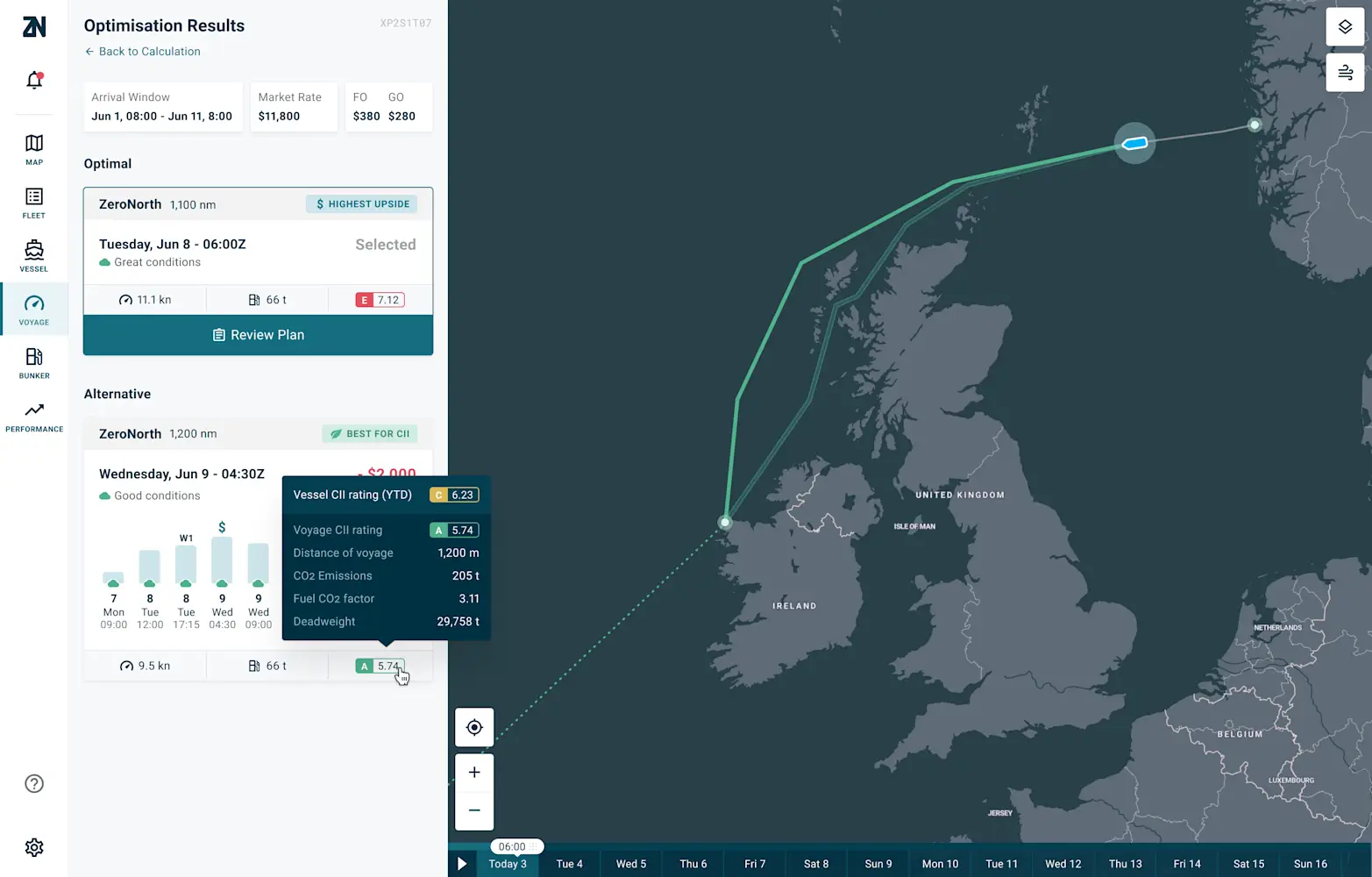Voyage optimisation for heads of operations

In the complex landscape of modern maritime, voyage optimisation is a critical factor.
In the pursuit of operational excellence, this revolutionary tool harnesses big data, analytics, and artificial intelligence to predict various factors, such as weather conditions, ocean currents, fuel consumption and port schedules, in order to enhance efficiency, reduce costs, and promote sustainability. Typically these priorities align: the most fuel-efficient route is usually the most sustainable, which, in turn, is often the most cost effective one.
However, as shipping companies strive to maintain a competitive edge, there can be a conflict between voyage optimisation and commercial considerations, which determine the viability of the business. Even minor cost-saving measures can significantly impact a company's bottom line, therefore integrating voyage optimisation strategies, which focus elsewhere, can be a challenge for shipping operations managers.
Here’s why…
1. Optimal routes vs. commercial deadlines
Voyage optimisation aims to chart the most efficient course, often prioritising fuel efficiency and safety. However, this can clash with commercial considerations, such as strict delivery deadlines and contractual obligations. Maintaining customer satisfaction is vital for shipping companies, therefore operations managers face the challenge of aligning route optimisation with the need to meet commercial commitments.
2. Fuel efficiency vs. speed for profitability
Voyage optimisation frequently emphasises fuel efficiency by choosing routes that involve slower speeds. However, the commercial success of many shipping operations relies on timely deliveries, which often translates into maintaining higher speeds. Balancing fuel efficiency with the need to deliver on time poses a significant problem for operations managers.
3. Risk mitigation vs. cost considerations
Optimising routes for safety involves navigating away from high-risk areas, which could add time and distance to the voyage. While this mitigates risk, it may conflict with commercial considerations, especially when cost cutting is a primary concern. Deciding when to prioritise risk mitigation over financial considerations is a crucial decision for operations managers.
4. Environmental regulations vs. cost efficiency
In this era of increased environmental awareness, voyage optimisation often involves choosing routes that minimise emissions and adhere to stringent environmental regulations. However, adopting eco-friendly routes can incur additional costs. Operations managers must navigate this conflict between environmental responsibility and the operations’ overall cost efficiency.

5. Real-time adaptability vs. fixed contracts
Voyage optimisation is inherently dynamic, optimising routes based on real-time data and conditions. This flexibility can conflict with fixed contracts and agreements that specify particular routes and delivery schedules. Operations managers must balance the advantages of real-time adaptability with the need to adhere to contractual obligations and avoid potential legal or financial repercussions.
6. Technological investments vs. immediate returns
Implementing advanced voyage optimisation technologies often requires substantial upfront investments. While these technologies promise long-term benefits, the conflict arises when operations managers need to justify these investments against immediate commercial returns. Balancing the desire for innovative technologies with the need for quick returns is a complex decision.
7. Cultural shift vs. operational continuity
Embracing voyage optimisation often requires a cultural shift within maritime organisations. Operations managers must navigate the conflict between introducing new technologies and methodologies, and maintaining operational continuity. It’s also important to respect the experience of their crew, as their resistance to change can impede the smooth integration of optimisation practices.
8. Voyage optimisation vs. commercial partnerships
Shipping companies often collaborate with port authorities and other stakeholders to ensure seamless operations. Optimised routes may not align with the preferences of these partners, leading to potential conflicts and split incentives. Split incentives are when the ship owner and charterer have different incentives for adopting energy saving strategies. According to Psaraftis et al. (2021) when fuel is being paid for by the charterer, ship owners don’t have an incentive to invest in energy saving technologies, because fuel is being paid for by the charterer and not by the ship owner.
Split incentives also occur when the spot rate for certain vessels is high, as it can be cheaper for charterers to travel at high speeds and burn more fuel in order to arrive at their destination as quickly as possible and minimise charter time. Demurrage is another example, where ship owners and managers rush their vessel to port at higher speeds, burning large amounts of bunker, to arrive early and maximise their wait time for cargo.
9. Long term advantages vs. quick financial gains
Effectively communicating the benefits of voyage optimisation, which may not always align with immediate commercial gains, poses a challenge. Operations managers need to articulate the long-term advantages of optimisation in terms of safety, sustainability and overall operational efficiency to stakeholders, who may be more focused on short-term commercial considerations.
How to harmonise voyage optimisation and commercial considerations
The role of technology in modern shipping demands a nuanced balance. While traditional maritime methods, rooted in the deep-seated expertise of seasoned mariners, have served well, the current era calls for a more holistic and collaborative approach, driven by data. Utilising advanced analytics and real-time monitoring, shipping managers can identify trends in both operational and commercial performance of various route options. This empowers those decision-makers to make choices that not only optimise voyages for efficiency, but also align with cost-effective practices.
How ZeroNorth can help
ZeroNorth’s Voyage Optimisation converts data into tangible actions. By connecting multiple data points within a single platform, our advanced algorithms generate data-driven recommendations to highlight the optimal route based on a customer’s specific goals. This can help optimise vessel schedules, identify profitable routes, and streamline overall operations.
Furthermore, we provide a detailed overview of the entire fleet, giving full transparency and actionable insights, which can be shared with all stakeholders. Sharing data seamlessly across the maritime value chain enhances visibility and coordination, fostering a unified approach to voyage optimisation that encompasses commercial considerations.
By enabling this holistic approach, shipping companies can find the right balance between voyage efficiency and profitability, while staying true to their commitment to sustainability.
Key features:
✓ Real-time weather route optimisation
✓ Compare multiple route suggestions, including the master’s route
✓ Customised vessel safety parameters & validation
✓ Advanced fuel models
✓ 24/7/365 weather service
✓ Support from master mariners and meteorologist professionals